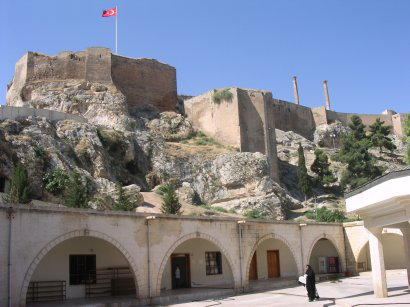AMMAN — The coalition around Kerbogha began the siege of Edessa in 1098 but failed to take the city after 40 days and continued to Antioch where they were supposed to face the advancing crusader's army. However, none of the three objectives of the campaign was completed and it negatively affected the troops.
Edessa could not be used as a supply base, the Turkmen did not receive sufficient booty to secure their full commitment to the rest of the campaign, and Baldwin was able to both damage the coalition’s supply system and provide for the crusaders.
"What was worse, campaigning an extra 40 days in the region of Edessa had raised the supply costs for Muslim troops, who refused to bear these costs and deserted," said the French historian Thomas Brosset.
Brosset noted that a mediaeval army composed of sedentary troops could carry up to 24 days’ supplies, but this capacity was conditioned by the ability to gather enough pack animals.
In other words, a troop of 1,000 cavalry would need 2,250 mules to carry their supplies for 24 days and if the coalition was based on that model, its 60,000–90,000 men would have required over 100,000 mules.
However, the coalition was not only composed of sedentary troops, Brossett continued, adding that probably half of the total number of men came from nomadic or semi-nomadic backgrounds, such as the Turkmen and likely the Arab contingent led by Wathab Ibn Mahmud.
"In order to feed themselves, these troops relied heavily on their herds rather than on pack animals, and so they depended on the availability of grazing. This caused few problems until the army arrived near Antioch, but local pasture there had been depleted for months by the crusaders.
This means that to be well supplied the sedentary half of the army relied on pack animals, while the nomadic half of the coalition relied heavily on what their herds had to offer. The following section considers that the sedentary troops of the coalition had enough pack animals to carry 24 days’ supplies," the historian underlined.
In a hypothetical scenario in which the coalition did not stop for 40 days in the region of Edessa, it would have taken them 28 days to reach Antioch. In that scenario, one full resupply was required to reach Antioch.
A historian Bell shows that troops had to pay for their own supplies. Instead of that scenario, however, the coalition took 68 days to reach Antioch. This means troops had to pay for three full resupplies, tripling the cost of the campaign – while they had not received substantial booty to cover their costs, Brossett maintained.
"Consequently, troops were substantially impoverished, which considerably damaged their morale. The extent to which Baldwin’s raid on the herds damaged the Turkmen’s supply system is unknown, but it would have added to these costs and they would have had to replace the lost animals or rely on buying supplies to replace them," Brossett noted.
He added that the impoverished Turkmen, whose primary motive for fighting was to enrich themselves, would have understood both that the siege of Antioch would last more than a few days and that intense fighting would be required.
It turned out that emirs and auxiliary troops instead of making gains during the campaign had to finance unsuccessful and costly venture out of their own pocket.
While Kerbogha’s behaviour alienated the emirs, who already had little reason to commit to the campaign, the rise in the campaign’s costs led to massive Turkmen desertions.
"Finally, the Arab contingent left the coalition following ethnic rivalries between Arabs and Turks. From a peak of 60,000-90,000 men, the coalition army may have fallen to as few as 35,000-45,000 men," Brossett said, noting that desertions were decisive in the campaign’s outcome, as it is likely about half the force deserted before the battle.
